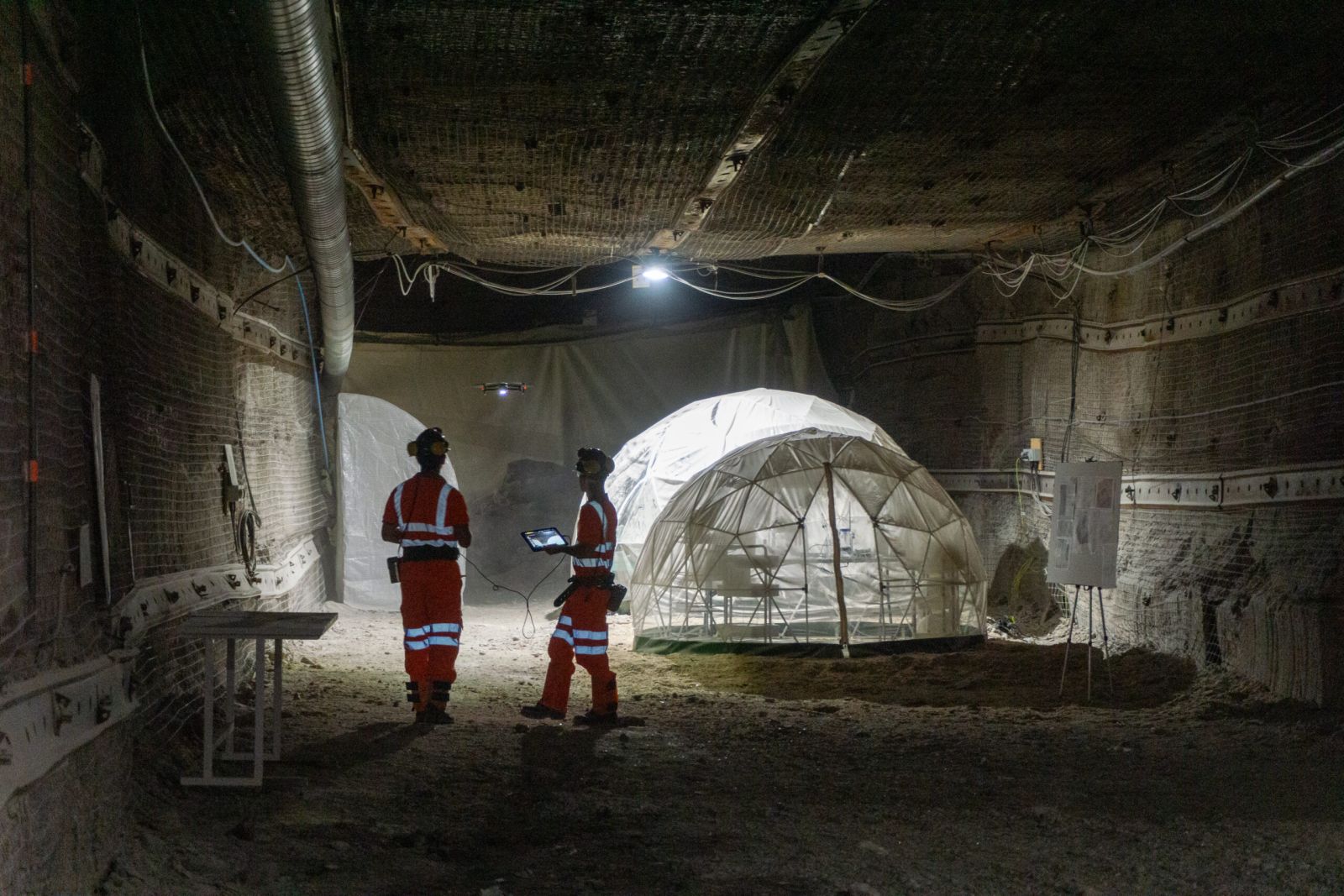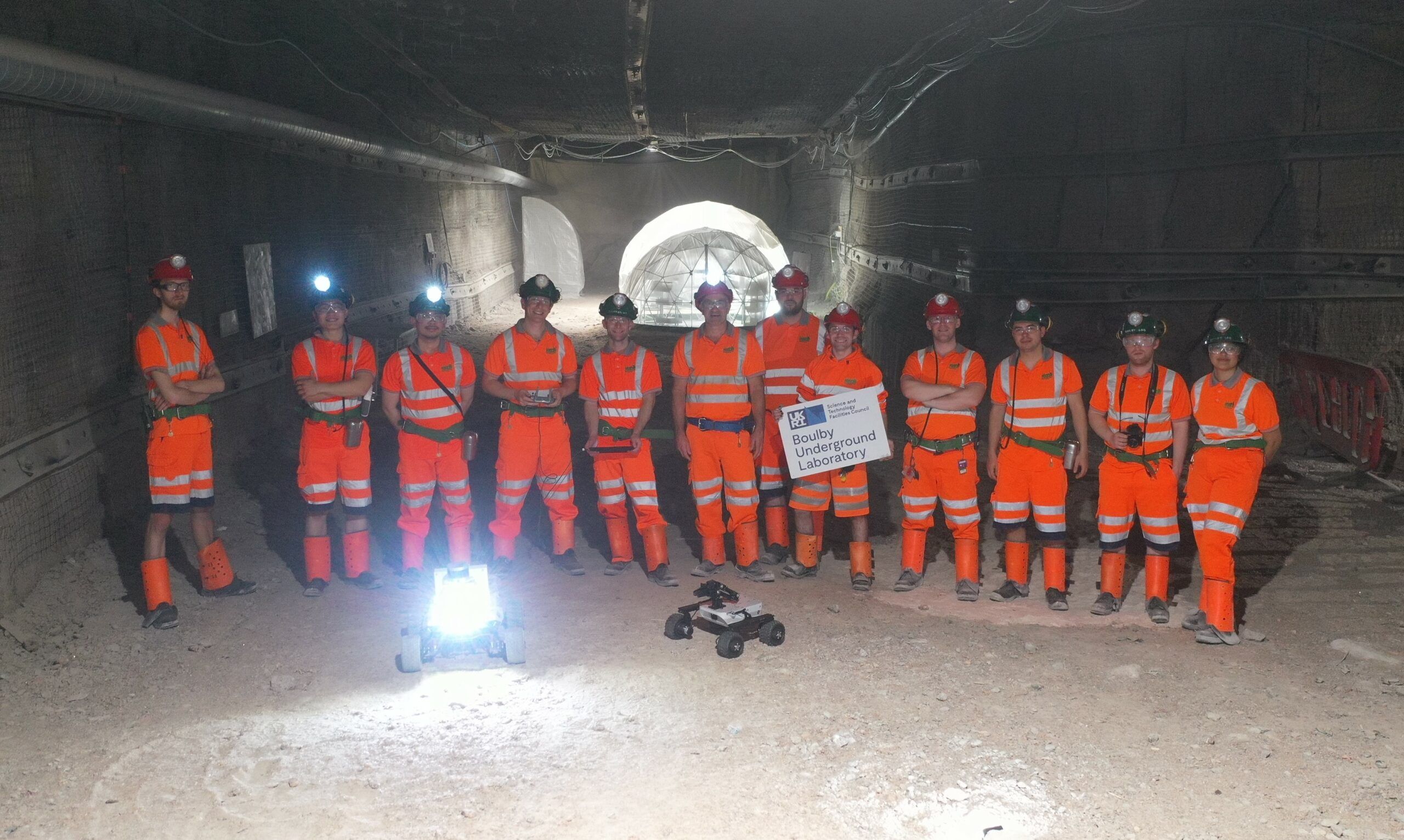Robots Deployed in Mars-Analogue 1.1 km Underground
by Paul Baniqued

The CRADLE Robotics and AI team recently participated in MINAR-XI at the Boulby Underground Laboratory, North Yorkshire.
The Mine Analogue Research (MINAR) Programme is a pioneering effort that brings together scientists from diverse fields to test technologies for planetary exploration and extreme environments. The Boulby mine, located 1.1 kilometres below ground, serves as a unique testing ground with its ~250 million year-old Permian evaporites. This working Polyhalite and salt mine provides an exceptional setting for studies in astrobiology, robotics and AI in extreme environments, and the development of technology for planetary exploration beyond Earth.
At the core of CRADLE’s participation was the opportunity to establish connections and expand its network within the workshop’s diverse participant base and stakeholders. Beyond networking, the workshop facilitated on-site field research, leveraging the unique underground environment of the Boulby mine. The geological features of the mine served as the ideal testing field for CRADLE’s ground rovers, quadruped robots, and drones. This allowed the team to survey the facility, collect useful robotics-related datasets, and capture compelling footage of the deployed robots in action.
Inspiration for Future Research and Industry Sprints
The knowledge acquired through CRADLE’s active participation in MINAR-XI is expected to inspire future research themes and industry research sprints. The workshop served as a dynamic platform for brainstorming, collaboration, and the exchange of ideas among members within both the CRADLE and MINAR communities. CRADLE’s involvement in this initiative positions them at the forefront of innovation in the development of technologies that could shape the future of planetary exploration and redefine the boundaries of robotic capabilities.
Special thanks to Jacobs and NNUF Hot Robotics


